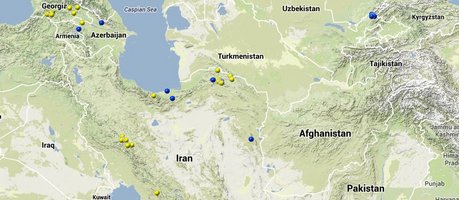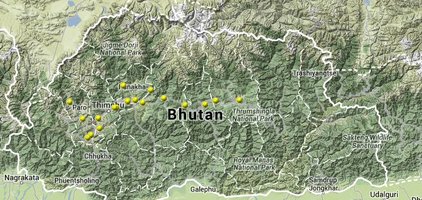Survey data overview
The CWANA survey
Berberis leaves infected with aecia were collected in the CWANA project in Iran, Azerbaijan, Georgia, Uzbekistan and Tajikistan in 2011 and 2012. In each country, infected Berberis leaf samples were collected from dispersed areas and from the greatest variety of Berberis species as possible. A special Berberis surveillance and sampling protocol was developed. Dried infected Berberis leaves were sent to the Global Rust Reference Center (GRRC). Single aecidums were cut from the Berberis leaves and subjected to DNA-extraction. DNA regions of the translation elongation factor gene (TEF1α), beta-tubuline gene (β-tub) or the Internal Transcribed Spacer (ITS) region were PCR amplified with primers which specifically target the fungal DNA. The PCR products were sequenced and the sequences compared to sequences in GenBank and “in house sequences” of Puccinia species in order to identify the rust species present on the Berberis leaves.

